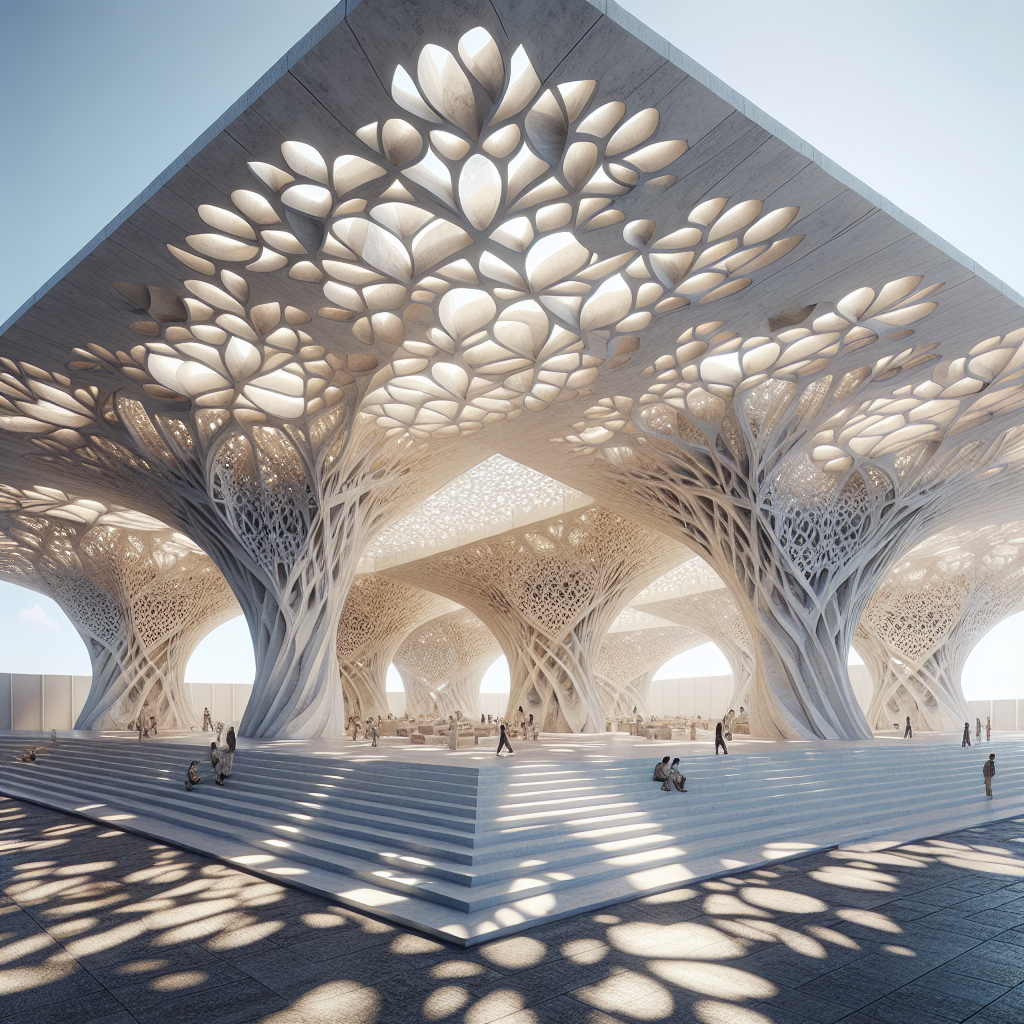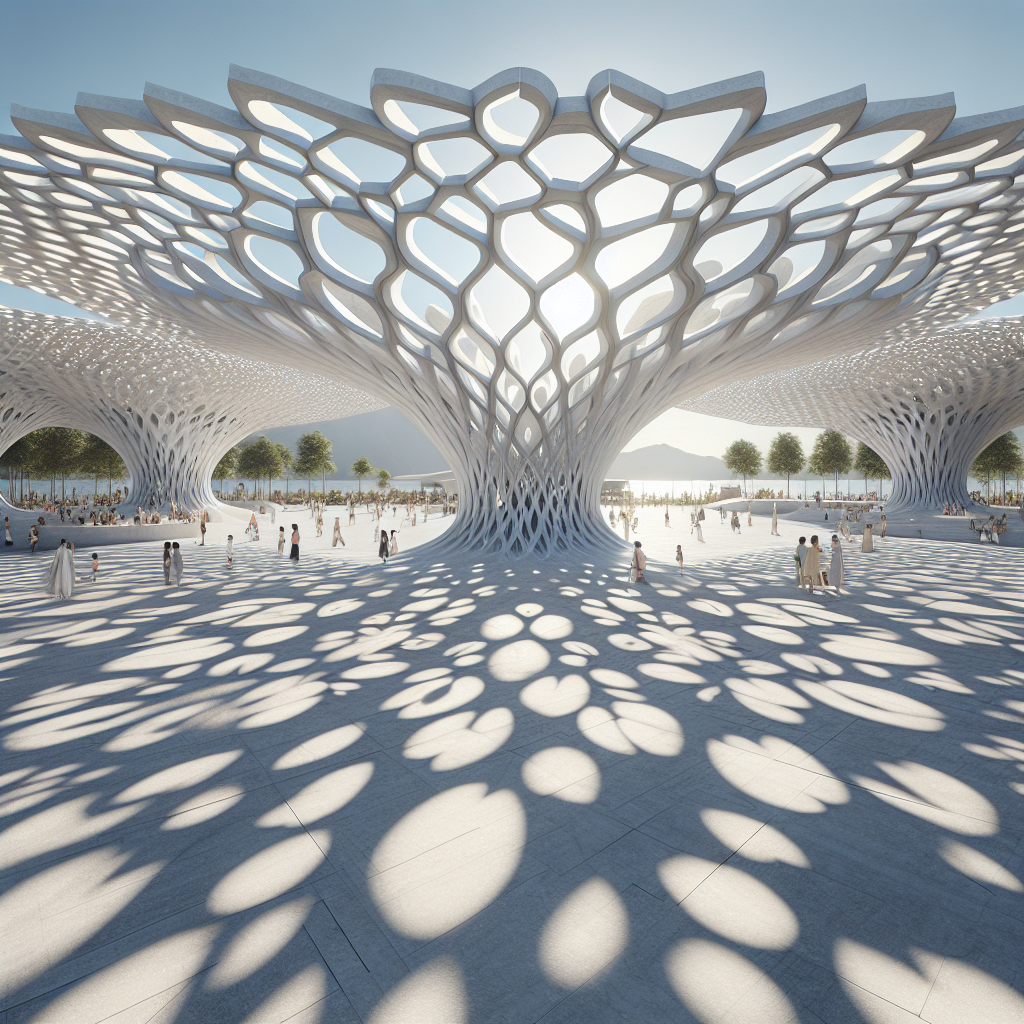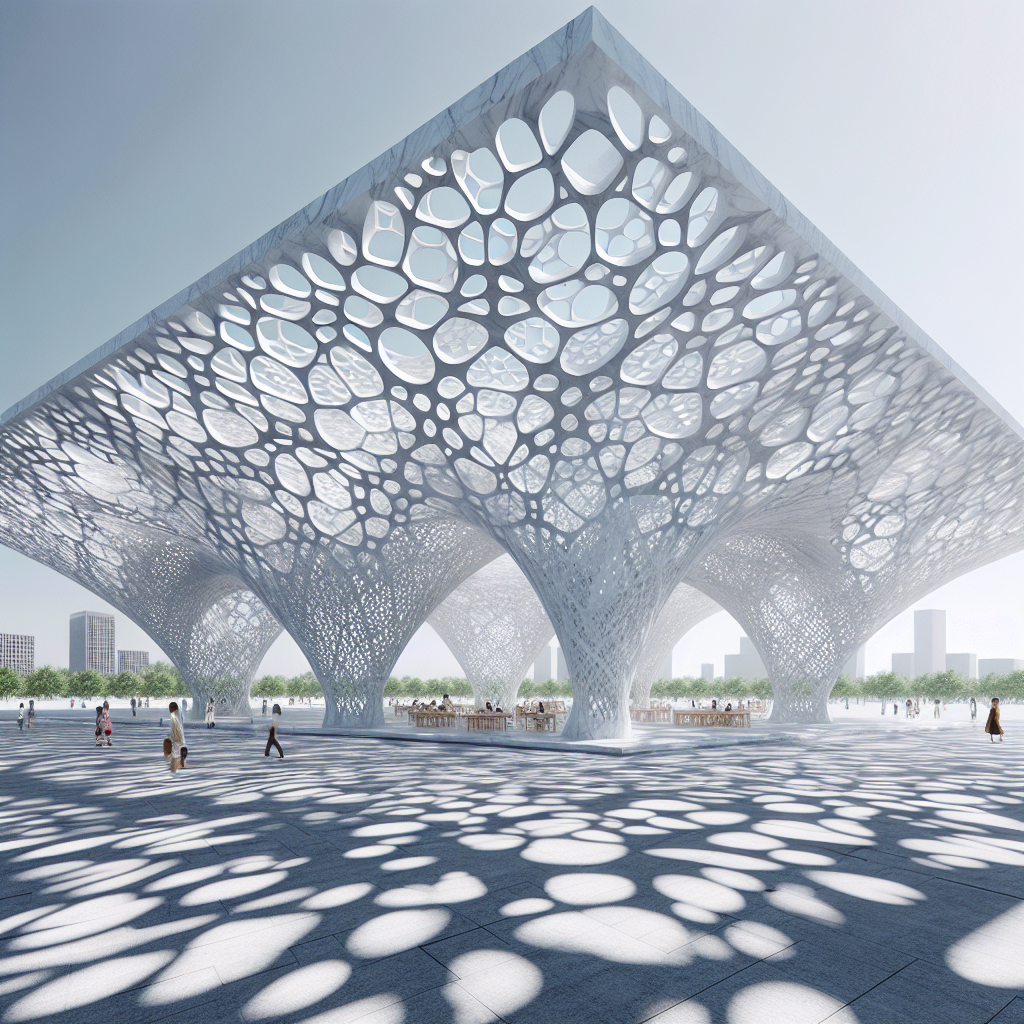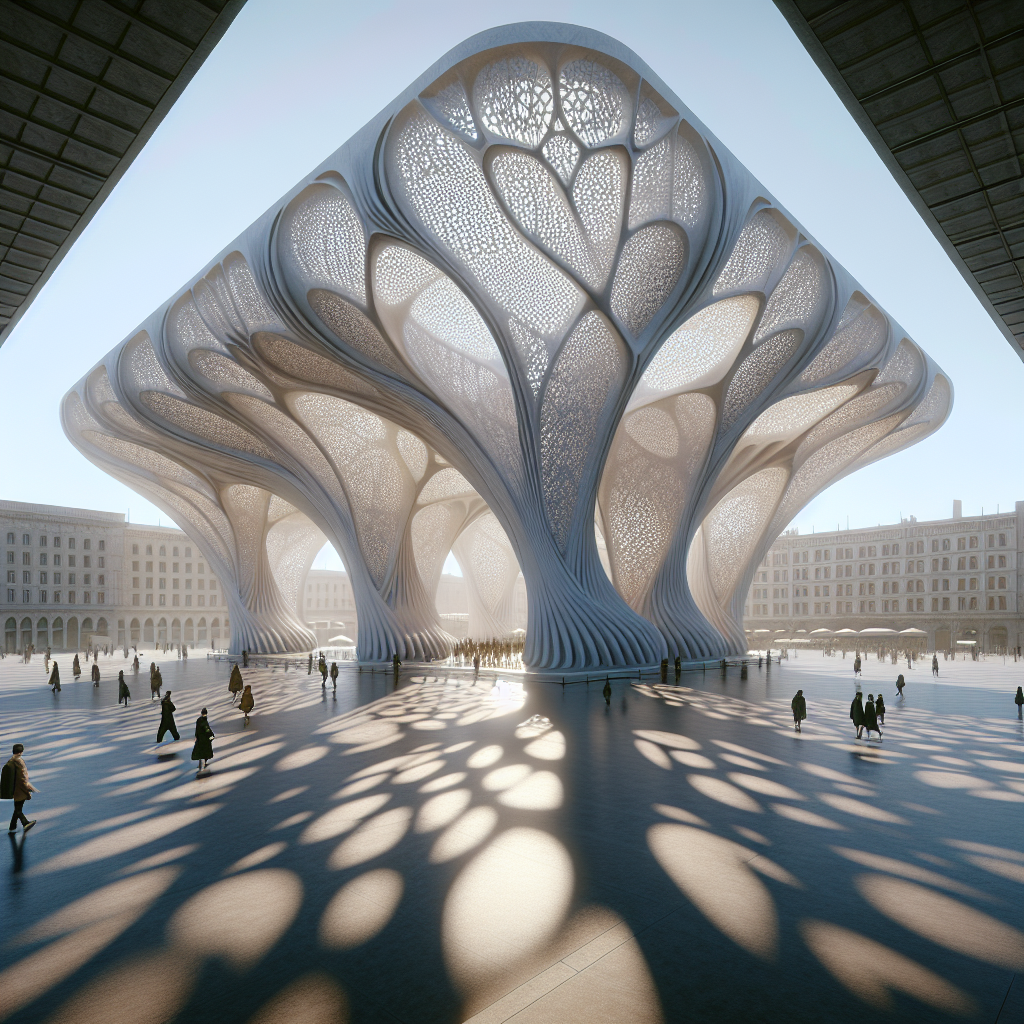Magnolia-lattice pavilions CNC-milled: marble filigree for open-air galleries

Magnolia-Lattice Pavilions CNC-Milled: Marble Filigree for Open-Air Galleries
In the realm of contemporary architecture, where material innovation and digital fabrication converge, a new typology of open-air structures is emerging: magnolia-lattice pavilions. These CNC-milled marble pavilions reinterpret centuries-old stone carving traditions through computational precision, creating filigree-like enclosures that balance lightness with permanence. They are not merely shelters but sculptural experiences—open-air galleries where natural light, shadow, and texture choreograph an ever-changing spatial narrative.
The Evolution of Marble as a Medium
Marble has long been synonymous with durability, elegance, and cultural prestige. From the Parthenon to Renaissance palazzi, its weight and solidity have symbolized permanence. Yet, with the advent of CNC machining, marble is no longer confined to monolithic blocks or heavy cladding. Instead, it can be milled into delicate, lace-like patterns that rival the intricacy of textile filigree. This shift transforms marble from a symbol of immovability into a medium of permeability, capable of breathing with its environment.
The magnolia-lattice concept draws inspiration from the magnolia flower’s layered petals, translating botanical geometries into perforated stone screens. These CNC-milled panels allow daylight to filter through like dappled sunlight beneath a canopy, producing a poetic interplay of shadow and luminosity across gallery floors.
Digital Craftsmanship Meets Heritage
What makes these pavilions compelling is their dual identity: they are both digitally fabricated and deeply artisanal. While algorithms generate the parametric lattice patterns, the tactile qualities of marble root the structures in centuries of stonecraft. This synthesis resonates with the ongoing discourse on reviving craftsmanship in modern architecture, where digital tools are not replacements but extensions of human ingenuity.
Designers increasingly view CNC milling as a form of digital chiseling—one that allows for unprecedented precision while still engaging with the unpredictability of natural stone. Veins, fissures, and tonal variations become part of the design language, ensuring that no two panels are identical. The result is a series of pavilions that feel simultaneously futuristic and timeless.
Spatial Qualities: Light, Shadow, and Air
Walking through a magnolia-lattice pavilion is akin to entering a living organism. The perforated marble walls act as porous membranes, filtering light and air. During the day, sunlight refracts through the lattice, casting intricate shadows that shift with the sun’s trajectory. At night, integrated lighting transforms the pavilion into a glowing lantern, its marble filigree radiating a soft, diffused aura.
Unlike traditional galleries, which often rely on controlled artificial lighting, these open-air structures embrace environmental variability. They are designed to curate nature itself—the breeze, the changing sky, the rhythm of seasons—turning the pavilion into a stage for ephemeral experiences. This approach aligns with the principles of biophilic design, reinforcing the connection between architecture, human well-being, and the natural world.
Case Studies: From Mediterranean Courtyards to Urban Plazas
Recent installations in Europe and Asia highlight the versatility of CNC-milled marble pavilions. In southern Spain, a magnolia-lattice pavilion was erected within a historic courtyard, echoing the Alhambra’s Moorish screens while introducing a contemporary sensibility. Its marble panels, milled with fractal magnolia motifs, created a dialogue between Islamic geometric traditions and parametric design.
In contrast, a pavilion in Tokyo’s Ueno Park adopted a more experimental approach. Here, the lattice was designed to modulate acoustics as well as light, creating a serene environment for open-air concerts. The marble’s density dampened urban noise, while its perforations allowed music to resonate outward, blending with the ambient sounds of the city.
Sustainability and Material Consciousness
While marble is often criticized for its carbon footprint, architects are exploring ways to mitigate its environmental impact. Many magnolia-lattice pavilions utilize reclaimed marble from quarries or construction waste, transforming discarded fragments into high-value architectural elements. This practice echoes the ethos of reclaimed materials in design, where sustainability and aesthetics converge.
Moreover, the CNC milling process allows for material optimization. By digitally simulating stress points, designers can minimize excess carving, ensuring that each panel uses only as much marble as structurally necessary. This approach not only reduces waste but also highlights the efficiency of computational design in sustainable architecture.
Magnolia-Lattice as Cultural Symbolism
The magnolia flower carries layered cultural meanings—resilience, purity, and renewal. Translating this botanical form into architectural latticework imbues the pavilions with symbolic resonance. In urban contexts, they serve as metaphors for resilience: delicate in appearance yet enduring in materiality. In cultural institutions, they embody renewal, signaling a shift toward open, porous, and environmentally attuned spaces.
This symbolic dimension is crucial in positioning magnolia-lattice pavilions not just as architectural experiments but as cultural artifacts. They are at once public sculptures, functional shelters, and philosophical statements about the evolving relationship between nature, technology, and design.
Market and Future Directions
According to recent studies in the global stone industry, demand for digitally fabricated marble elements is projected to grow steadily, particularly in luxury architecture and cultural institutions. Pavilions like these are increasingly commissioned for biennales, design weeks, and museum expansions, where they serve as both functional infrastructure and artistic centerpiece.
Looking ahead, architects are experimenting with hybrid materials—combining marble with glass, bronze, or bio-resins—to enhance structural flexibility and reduce weight. Others are exploring modular assembly, enabling pavilions to be disassembled and relocated, extending their lifecycle across multiple sites. This aligns with broader trends in modular construction and circular design economies.
A New Paradigm for Open-Air Galleries
Magnolia-lattice pavilions represent a profound rethinking of what marble can be in the 21st century. They embody a paradox: heavy yet delicate, ancient yet futuristic, permanent yet ephemeral. By merging CNC precision with botanical inspiration, they create environments that are as much about sensory experience as they are about structural innovation.
For architects, designers, and cultural curators, these pavilions offer a blueprint for the future of open-air galleries—spaces where craftsmanship, technology, and nature intersect to produce architecture that is both intellectually rigorous and emotionally resonant. They remind us that even the most traditional materials can be reimagined through the lens of digital fabrication, yielding designs that are not only visually striking but also deeply attuned to the rhythms of life and landscape.
In an era where cities seek to balance density with openness, permanence with adaptability, magnolia-lattice pavilions stand as luminous examples of how architecture can simultaneously honor tradition and embrace innovation.








